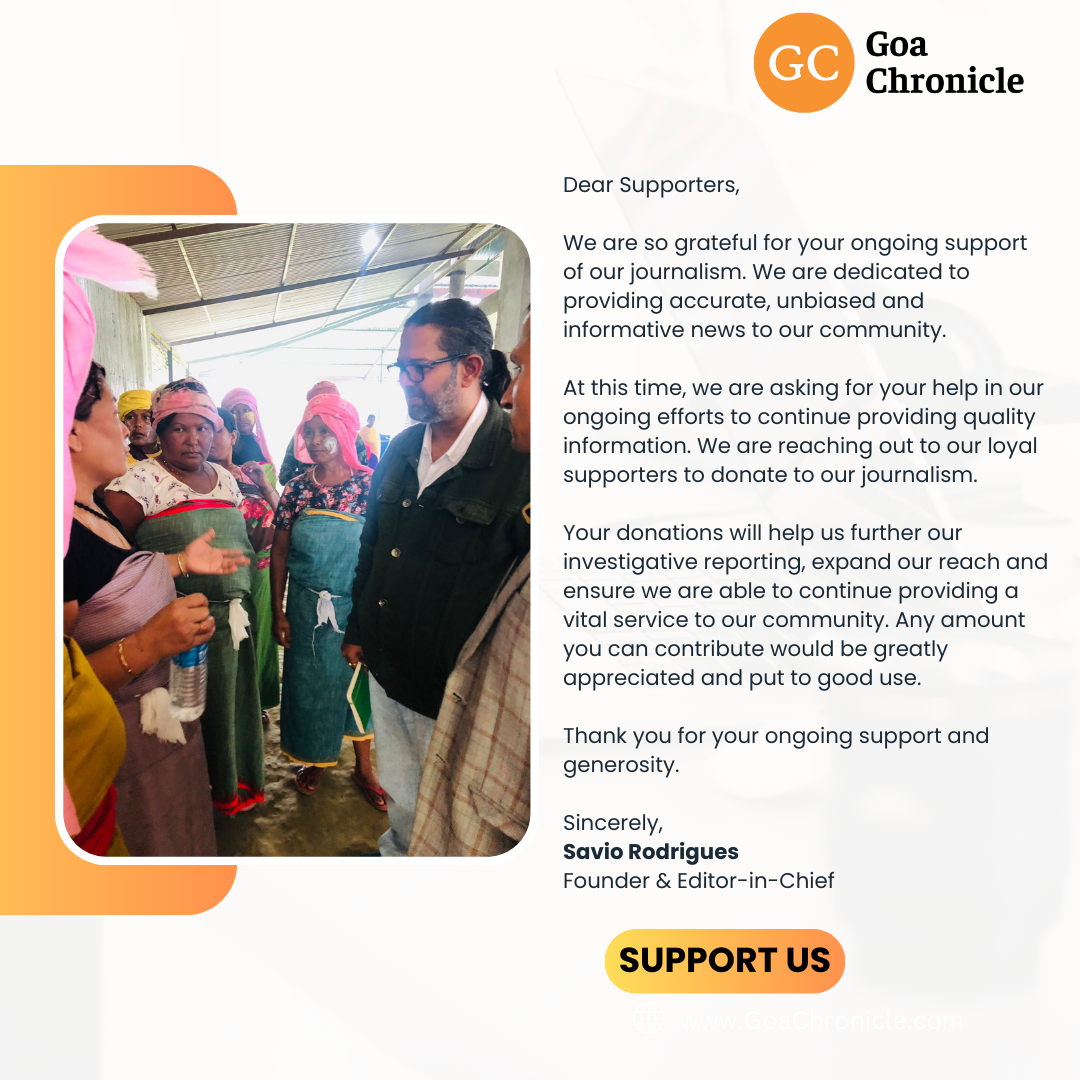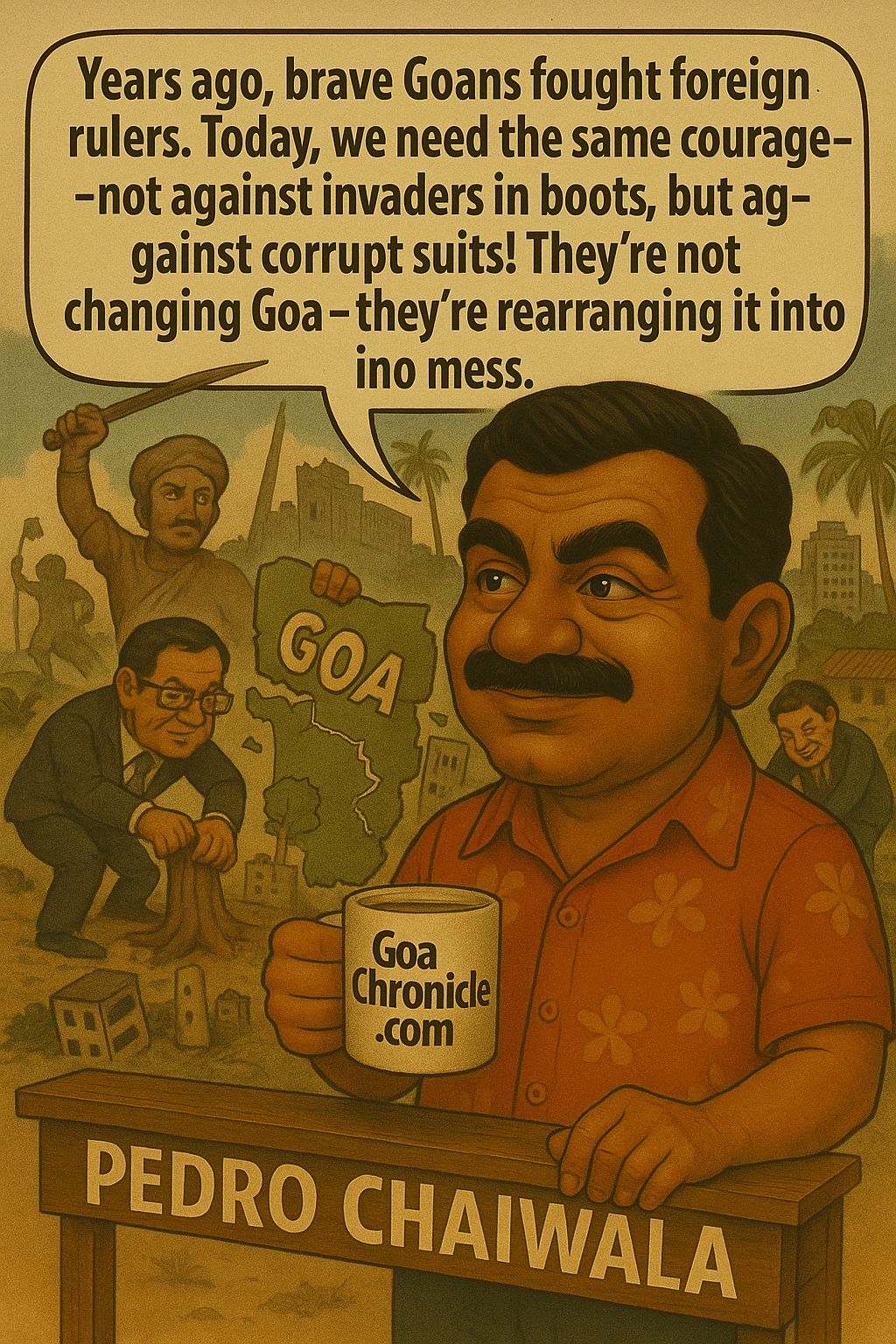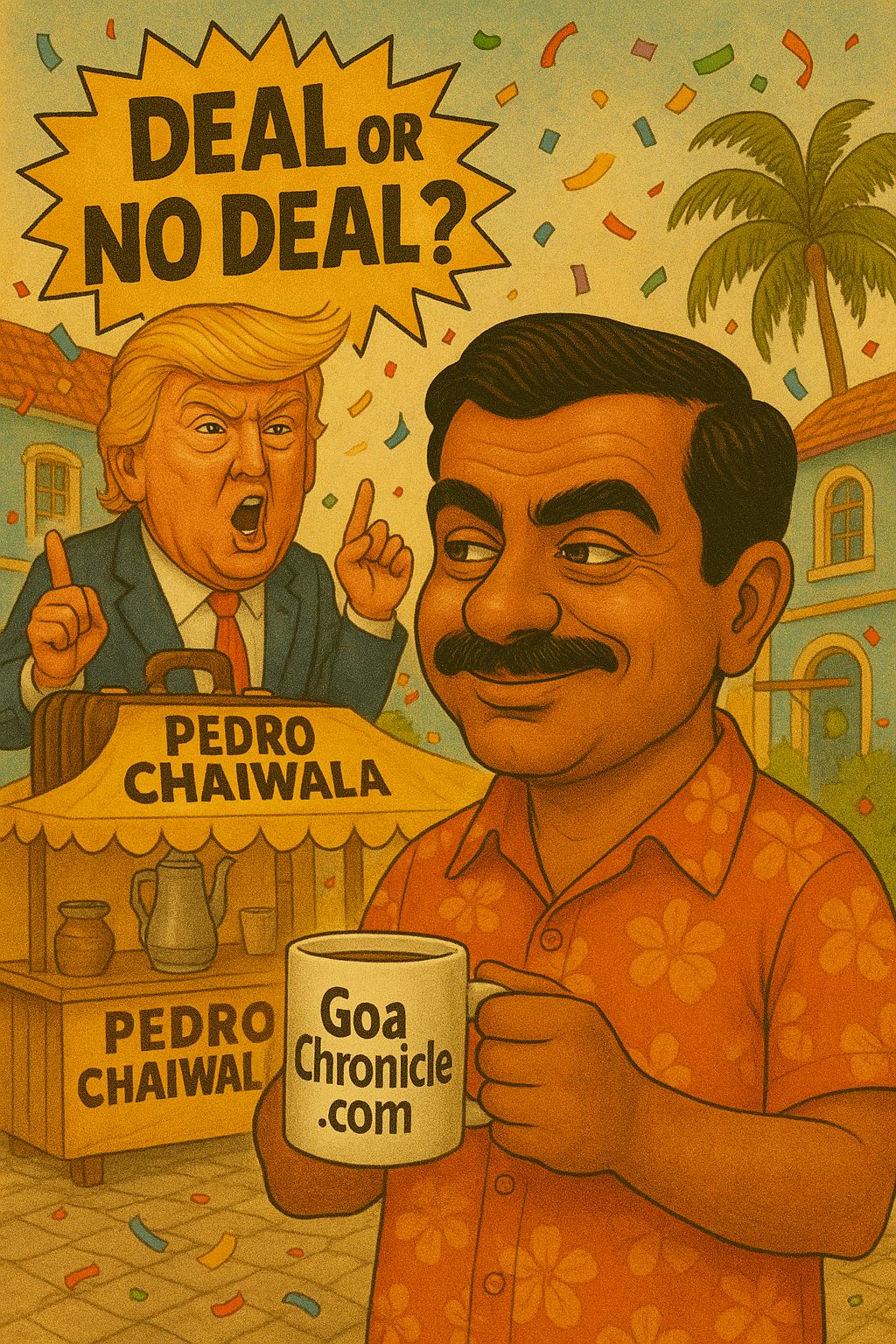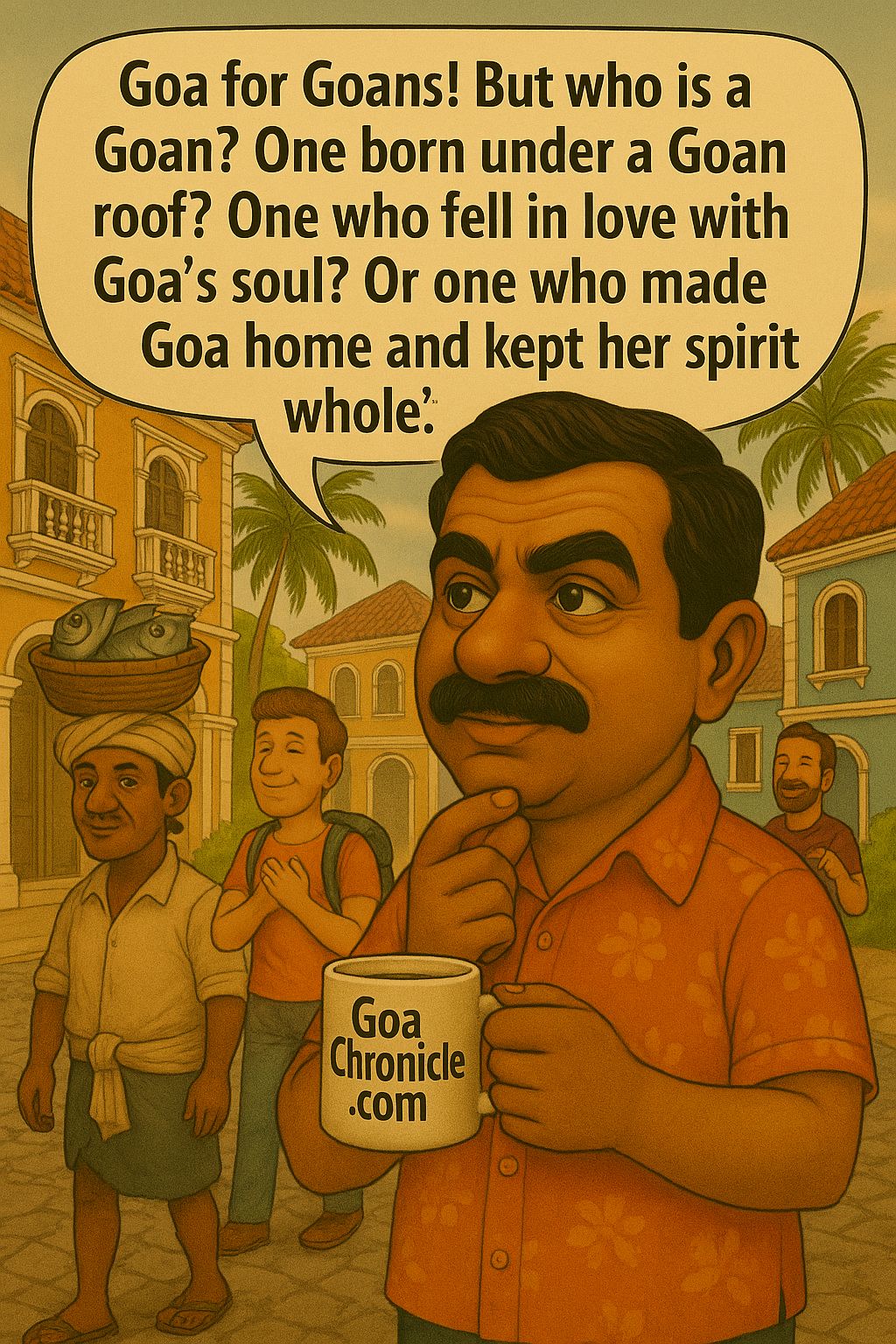Quickly name 20 ministers in the Modi government. Did you succeed? There are 53 ministers (21 Cabinet Ministers excluding the PM and 32 MoS) as of June 15, 2021. If you could not name 20, it is probably because most have not done any significant work and Modi himself has a larger-than-life image that completely overshadows all his ministers put together. This is not good for any country, leave alone a country with 139.3 crore (1.393 billion) people.
From the outgoing Modi 1.0 ministry comprising 70 ministers excluding the PM in May 2019, 35 ministers were excluded in Modi 2.0. Why does a chief executive sack 50% of his top executives? Obviously, because he is not happy with their performance. But has much improved in Modi 2.0? Let’s take a look…
Here are the ministries and the ministers, arranged in the order of what I consider as most important for the India of the future.
I/C = an MoS with “Independent Charge”, meaning there is (or was) no Cabinet Minister in that ministry.


Here are my ratings of the ministers based on their work in the past 3-7 years (as some have been there since Day-1 of Modi 1.0 and some only became ministers in Modi 2.0). The numbering of the ministers from 1 to 32 is based on the weightage of portfolios allocated to them. I am only rating the 30 cabinet ministers or those MoS who have Independent Charge of a ministry.
(1) Amit Shah: Home (since May 2019) — 8/10
POSITIVES: He piloted many important national security legislations such as the NIA (Amendment) Act, Triple Talaq Act, UAPA (Amendment) Act, CAA, and the split of the erstwhile state of J&K into two UTs as well as abrogation of Article 370. Insurgency is down in J&K. Paramilitary forces are acting with new rigour against Maoist and Naxal insurgencies.
NEGATIVES: The R&AW was not able to warn us about the Chinese incursion of May 2020. The National Registry of Citizens has not been completed in Assam, and it has to be followed in the rest of India. A Uniform Civil Code needs to be brought. Much-needed election and police reforms are pending. Tens of thousands of Hindu temples have to be released from the financial control of state governments.
(2) Dr Subrahmanyam Jaishankar: External Affairs (May 2019) — 9/10
It was an excellent move by the PM to make this career diplomat the MEA (foreign minister), a ministry considered by many of the world’s largest economies as the most important. From Jan 2015 to Jan 2018, Jaishankar was India’s foreign secretary. He speaks Japanese, Mandarin (Chinese), Russian, and Hungarian. Jaishankar has served in Indian missions at Moscow, Colombo, Budapest, and Tokyo; was Ambassador to Czechia; High Commissioner (equivalent to Ambassador) to Singapore; India’s longest-serving ambassador to China; and Ambassador to the US. Having served at the three most important Indian missions in Washington, D.C., Beijing, and Moscow, and the ability to speak four foreign languages, there was no better man for the post.
POSITIVES: Unlike his predecessor Sushma Swaraj, he has been able to take away a lot of the PM’s workload of dealing with world leaders. India’s relations with most countries remains rock solid.
NEGATIVES: There is no improvement in relations with China.
(3) Rajnath Singh: Defence (May 2019) — 7/10
POSITIVES: Defence procurement, which suffered under the Congress-led UPA, was given top priority and decisions are being taken with the urgency they deserve. The Make-in-India defence program has also been given priority.
NEGATIVES: The Defence Intelligence Agency and other agencies in the ministry were not able to warn us about the Chinese incursion of May 2020. I would like to see former Army Chief General VK Singh as the Minister of Defence. The US, China, and Russia usually have former defence officers as Defence Ministers. Even the UK’s current Defence Minister, Ben Wallace, was in the Army for seven years. Why can’t we do the same in India?
(4) Nirmala Sitharaman: Finance (May 2019) — 5/10
After 26 months as MoS Commerce & Industry and 21 months as Defence Minister in Modi 1.0 (India’s first woman defence minister), she was made the first woman FM in Modi 2.0. This is one of the fastest growth paths for a politician in India’s history, and is quite surprising, considering that she joined the BJP only in 2006, her husband Prakala Prabhakar is a senior TDP member, and that her in-laws have been Congress party legislators or ministers.
POSITIVES: Despite Covid-19, the economy has not completely collapsed and inflation remains in check. Budget 2021 was quite path-breaking, especially if the privatization plan succeeds.
NEGATIVES: Most other major world economies have ‘specialists’ as the FM, rather than pure politicians. Look at the Wikipedia pages of the last four U.S. “Secretaries of the Treasury” [their FM]—Tim Geithner, Jack Lew, Steve Mnuchin, and Janet Yellen—and you will realise what I mean. The same is the case with China’s last two FMs; the UK’s last three “Chancellors of the Exchequer”; and Italy’s and Brazil’s last three FMs. PV Narasimha Rao had the vision to appoint a ‘specialist’—Dr Manmohan Singh—as FM, and Singh was a successful FM. Unfortunately, no PM after Rao did this.
(5) Piyush Goyal: Railways (Sep 2017) Commerce & Industry (May 2019); Consumer Affairs, Food and Public Distribution (temporary charge since Oct 2020) — 7/10
POSITIVES: Railways infrastructure development and safety are at all-time highs.
NEGATIVES: Export growth is still slow. Domestic manufacturing (industry) has not picked up much momentum.
(6) Ravi Shankar Prasad: Law & Justice (July 2016); Communications (25½ months in Modi 1.0 and since the beginning of Modi 2.0); Electronics & IT (July 2016) — 4/10
He is only No. 6 here because the U.S. Attorney General (their Law Minister) is the 4th most important cabinet member and the Lord Chancellor in the UK the 5th most important.
POSITIVES: IT sector and electronics manufacturing are doing well, but that has nothing to do with the minister or the ministry. The IT ministry is empowering ordinary citizens through Common Service Centres (CSCs), which are one-stop shops for digital services such as booking railway tickets, payment of utility bills, PAN and Aadhar enrolment, banking and insurance services, etc. Number of CSCs were increased from 83,000 CSCs in May 2014, to 3.74 lakh in May 2021.
NEGATIVES: India badly needs several judicial reforms, which I have written about in my No.1 bestseller book Congress-Mukt Bharat, but nothing has been done on this front. India’s 3G and 4G network stability remains pathetic.
(7) Dr Rajiv Kumar (Vice Chairman; Sep 2017) and Amitabh Kant (CEO; Feb 2016): Planning / NITI Aayog — 8/10
NITI Aayog is India’s policy-making body and is headed by the PM. Its Governing Council comprises CMs of all states and Lt Governors of all UTs. Renowned economist Dr Rajiv Kumar has the rank of Cabinet Minister. IAS officer Amitabh Kant became famous for creating the “God’s Own Country” advertisement campaign when he was Kerala’s Tourism Secretary and the “Incredible India” campaign when he headed India Tourism. As Industries Secretary of India, Kant was the brain behind “Make in India” and “Startup India”.
POSITIVES: The initiatives of the Planning ministry / NITI Aayog are working well, especially for the rural poor population.
(8) Nitin Gadkari: Road Transport & Highways (May 2014); Micro, Small & Medium Enterprises (May 2019) — 9/10
POSITIVES: Highway expansion and improvement has been one of the most remarkable achievements of Modi’s seven years, and Gadkari has handled this ministry for all those seven years.
NEGATIVES: The new schemes have not yet made a considerable impact on the MSME sector.
(9) Narendra Singh Tomar: Agriculture & Farmers’ Welfare; (May 2019) Rural Development & Panchayati Raj (July 2016); Food Processing Industries (Sep 2020) — 6/10
POSITIVES: The Farm Reform legislations of September 2020 were path-breaking and are already proving to be extremely beneficial for farmers. They are helping reduce ages-old corruption in the sector.
NEGATIVES: Tomar has not been able to handle the opposition to the farm reforms from a certain sector of farmers, despite their being politically motivated and foreign-funded.
(10) Dr Ramesh Pokhriyal: Education (May 2019) — 7/10
POSITIVES: The process to formulate a new National Education Policy (NEP) started in Jan 2015 by a committee headed by TSR Subramanian (former Cabinet Secretary of India) which submitted its report in June 2017, but the then minister Prakash Javadekar sat on it. Dr Pokhriyal’s ministry released a draft policy in Nov 2019 and got it approved by the Cabinet in July 2020.
NEGATIVES: Implementation of many of the reforms in the NEP are going slow.
(11) Dr Harsh Vardhan: Health & Family Welfare (May 2019 and 5½ months in Modi 1.0); Science & Technology (Nov 2014); Earth Sciences (Nov 2014) — 4/10
POSITIVES: The ministry’s handling of the first wave of Covid-19 was good.
NEGATIVES: The ministry’s handling of the second wave of Covid-19 has been pathetic. Government healthcare infrastructure across India (except in top hospitals like AIIMS) is in pathetic shape and needs to be revamped and modernised—similar to what is happening with Indian Railways.
(12) Dr Thaawar Chand Gehlot: Social Justice & Empowerment (May 2014) — 9/10
POSITIVES: He oversaw the massive enhancement of DBT and the introduction of several schemes for the economically and socially backward population, which led to Modi’s massive election victory in 2019.
(13) Prakash Javadekar: Environment, Forest & Climate Change (May 2019 and 25½ months in Modi 1.0); Heavy Industries & Public Enterprises (Nov 2019); Information & Broadcasting (May 2019 and for 5½ months in Modi 1.0) — 3/10
POSITIVES: Corruption has been done away with in environmental approvals for large projects and is also happening faster.
NEGATIVES: There is no improvement in the functioning of heavy industries and public (industrial) enterprises. The government’s handling of information dissemination is pathetic. The rampant spread of fake news in print and broadcast media has not been controlled.
(14) Hardeep Singh Puri (IFS): Housing & Urban Affairs (MoS I/C Sep 2017); Civil Aviation (MoS I/C May 2019); Commerce & Industry (MoS May 2019) — 9/10
POSITIVES: Puri is handling the ₹6.53 lakh crore PM Awas Yojana Urban; ₹2.05 lakh crore Smart Cities mission; ₹81,232 crore for tap water supply, sewage, and septage management, and storm water drainage; Swachh Bharat Urban; Metro Rail in 27 more cities; and Bus Rapid Transport System in 11 more cities; amongst other projects. Airport modernization and privatization is also progressing well. With the experience of having been the coordinator of the UNDP/UNCTAD project from 1988 to 1991 to help developing countries in multilateral trade negotiations, and the Permanent Representative of India to the UN (May 2009-Feb 2013), he is using his experience in trade negotiations in the Commerce Ministry. In the last few weeks, he has also become the de facto spokesperson of the Modi Government in countering a lot of false negatives, especially on social media, a job that Prakash Javadekar should have been doing, but Puri is doing, and that too, very well.
NEGATIVES: Urban India is home to ~49 crore people, ~47% higher than the USA’s total population, and this will rise to >60 crore by 2030. Our cities have decayed so much that the situation is pathetic. Being a state subject, I don’t know how much the Central Govt. can do. India needs world-class cities and that won’t happen with just ₹11-15 lakh crores. Just the top 100 cities will need ₹80-100 lakh crores and a full-time Cabinet Minister with no other responsibilities.
(15) Santosh Kumar Gangwar: Labour and Employment (Sep 2017) — 5/10
POSITIVES: Labour reforms of Sep 2020.
NEGATIVES: It is shocking that this ministry does not have a Cabinet Minister, considering that lack of jobs is ranked as Modi’s biggest failure in many polls. In this era of automation, AI, and machine learning, can a 73-year-old do justice to this important ministry? I do not think so.
(16) Dr Mahendra Nath Pandey: Skill Development & Entrepreneurship (May 2019) — 5/10
POSITIVES: About 1.135 crore youth have enrolled in the PMKVY scheme that provides free short duration skill training and incentivizes this by providing monetary rewards to youth for skill certification. More than 20.4 lakh enrolled in the craftsmen training scheme. Almost 16 lakh enrolled in PMKK model training centres. More than 9.33 lakh non-literates, neo-literates, unskilled and unemployed youth mainly from SC/ST/OBC/Divyang/minority sections of society enrolled in Jan Shikshan Sansthans.
NEGATIVES: Given the population of India, these numbers are relatively small.
(17) Dharmendra Pradhan: Petroleum & Natural Gas (May 2014); Steel (May 2019) — 9/10
POSITIVES: More than 8.03 crore free LPG connections were given under the Ujjwala Yojana. Pradhan introduced a new Hydrocarbon Exploration and Licensing Policy that freed up gas prices, gave explorers freedom to carve their blocks, and a common license to extract all forms of hydrocarbons. He also auctioned dozens of big and small blocks and made several regulatory changes to ease upstream operations. India signed an agreement to store crude oil in strategic petroleum reserves (SPRs) in the US, not for just emergencies but also for trading to capture any price advantage. India will also consider other viable countries to store SPRs. Underground crude storage facilities are being set up in Odisha and Karnataka with a capacity of 6.5 million metric tons (MMT) to increase emergency stockpiles from 10 to 22 days. India already has underground rock caverns for 5.33 MMT at Mangaluru, Vizag, and Padur. Pradhan is trying to make India a gas-based economy. Licences were given for piped cooking gas supply to homes in 406 districts or ~71% of India’s population. 50-100 more districts, mainly in MP, Chhattisgarh, and Maharashtra, will join the network soon. This is part of Modi’s plan to raise the share of natural gas in India’s energy basket from 6.3% to 15% by 2030. In addition, earlier this month, Modi advanced India’s target of making petrol with 20% ethanol by five years to 2025 to save ₹30,000 crores per year. Currently, 8.5% of ethanol is blended with petrol in India.
(18) Gajendra Singh Shekhawat: Jal Shakti (May 2019) — 7/10
POSITIVES: On August 15, 2019, Modi announced a ₹3.6 lakh crore Jal Jeevan Mission (water is life mission) to provide 55 litres of piped drinking water per person per day to all 19.02 crore rural households by 2024. Only 16.86% of households had functional household tap connections (FHTCs). In 22 months, this has been increased by 132.8% and 39.25% of rural households now have FHTCs. 92,636 villages have 100% FHTCs as on date. In February 2021, the government extended the mission to 4,378 towns where safe water will be provided to over 2.86 crore households. The Jal Jeevan Mission (Urban) will include rejuvenation of water bodies as well as 20% of water supply from recycling.
NEGATIVES: Only ~44% of the ₹28,854 crore ‘Namami Gange’ project (which aims to reduce pollution and conserve and rejuvenate the 2,510-km ‘national river’ Ganga and its tributaries) has been completed in seven years.
(19) Dr Jitendra Singh: MoS in the PMO; MoS in Personnel, Public Grievances & Pensions; MoS in Department of Space and Department of Atomic Energy (May 2014); MoS I/C for Development of North East Region (DoNER; Nov 2014) — 10/10
POSITIVES: As Modi has continued with Singh in the four ministries/departments that come under the PM for over seven years, and as MoS DoNER for 79 months, Modi must be happy with his performance.
(20) Smriti Irani: Textiles (July 2016); Women & Child Development (May 2019) — 7/10
POSITIVES: Before becoming a minister, Irani successfully got a permanent commission for women in the Army. One of her first legislative initiatives as WCD Minister was the Amendment to the Protection of Children from Sexual Offences (POCSO) Act, which made punishment more stringent and included the death penalty for sexual crimes against minors.
NEGATIVES: The textiles sector is not growing as per its potential.
(21) Raj Kumar Singh: MOS I/C in Power; New & Renewable Energy (Sep 2017); MoS Skill Development & Entrepreneurship (May 2019) — 9/10
POSITIVES: The power sector (including renewable energy) is doing very well. The total power generation capacity of 243 GW in March 2014 was enhanced to 382.73 GW, an increase of 57.5%. After decades of shortages, India is now a power-surplus nation. Wind power capacity has increased 17.13 times, from 2.3 GW to 39.41 GW. Solar power capacity has increased 15.58 times, from 2.6 GW to 40.5 GW. India now has the world’s fourth highest capacity in renewable energy at 141.22 GW (36.9% of total power capacity), with ~2.6 times growth. Electricity distribution companies are steadily recovering from the high debts they were burdened with earlier. More than 18,000 villages had no electrical connections when Modi became PM. Within four years, this was reduced to zero. All urban houses and 99.93% of rural households have been electrified since Oct 2017, under SAUBHAGYA.
(22) Prahlad Singh Patel: MoS I/C Tourism; Culture (May 2019) — 0/10
NEGATIVES: India ranked 34th in the 2019 Travel & Tourism Competitiveness Report of the World Economic Forum. We are the 25th most visited country by foreign tourists. Should the world’s 6th largest economy and 7th largest country by area be proud of these numbers? We have nice beaches, backwaters, wildlife sanctuaries, temples, world heritage sites, caves, other ancient monuments, but get only 1.26 foreign tourists per 100 residents, while Hong Kong gets 390, Austria 341, Greece 289, Singapore 251, Spain 177, the UAE 160, France 133, Italy 103, Malaysia 79, Thailand 55, Turkey 54, the UK 53, Mexico 32, Japan 25, the USA 24, and even Russia, Vietnam, and China get 17, 16 and 4.4, respectively. At a level of 3 foreign tourists per 100 residents, India will get ~2.4 crore more foreign tourists per year. As a foreign tourist spends ~$1710, this will enhance our income by a whopping $41 billion or ~₹3 lakh crore per year, grow our GDP by 2% and create ~67 lakh jobs.
(23) Pralhad Joshi: Parliamentary Affairs; Coal; Mines (May 2019) — 6/10
POSITIVES: There has been less ruckus by the opposition in Parliament after he became the minister.
NEGATIVES: He has not achieved much in the ministries of coal or mines.
(24) Mukhtar Abbas Naqvi: Minority Affairs (July 2016) ) — 7/10
POSITIVES: Naqvi made India the first country with a 100% online Haj pilgrimage process. There was a record increase in Haj pilgrims despite the abolition of the Haj subsidy, demolishing the myth that Haj pilgrims were dependent on the subsidy, which was nothing but a scam by previous governments. He also removed restrictions on women going to Haj without a Mehram (male companion) enabling thousands of women to go for Haj. He ensured 100% digitisation of Wakf properties and 100% government funding for socio-economic-educational development projects on Wakf lands, which opened the path for progressive utilisation of 6.61 lakh Wakf properties.
NEGATIVES: BJP’s Muslim vote share did not increase in 2019.
(25) Giriraj Singh: Animal Husbandry, Dairying & Fisheries (May 2019) — 7/10
POSITIVES: Almost 16 crore animals and 5.65 crore farmers have been registered. More than 10.63 crore vaccinations have been done. There are many other achievements in this ministry, though I am not sure how many have been under Singh.
(26) Mansukh L. Mandaviya: MoS I/C Ports, Shipping & Waterways (MoS July 2016; I/C May 2019); MoS Chemicals & Fertilizers (July 2016) — 8/10
POSITIVES: 85 projects worth ₹30,228 crores have already been completed and 155 projects worth ₹4.166 lakh crores are under development in the ambitious ₹6.015 lakh crores Sagarmala project.
(27) Arjun Munda: Tribal Affairs (May 2019) — No rating
NOTE: I have not given any rating as it was difficult for me to evaluate how well the ministry is performing based on the data given on the dashboard on its website.
(28) Kiren Rijiju: MoS I/C Youth Affairs & Sports (May 2019); MoS Minority Affairs (May 2019) — No rating
NOTE: I have not given any rating as it was difficult for me to evaluate how well the ministry of youth affairs and sports is performing based on the data given on the two dashboards on its website.
(29) Shripad Yesso Naik: MoS I/C AYUSH (Nov 2014; since ministry established); MoS Defence (may 2019) — 8/10
POSITIVES: 11 Ayush institutes have been set up; 3,986 hospitals and 27,200 dispensaries are giving Ayush treatment; almost 13.88 lakh practitioners have treated 18.1 crore patients; 914 colleges are imparting Ayush education; 756 research projects are ongoing; and almost 9,000 units are producing Ayush medicines.
(30) DV Sadananda Gowda: Chemicals & Fertilizers (Nov 2018) — 7/10
POSITIVES: The installed capacity of chemicals increased by 8.85% and petrochemicals by 16.5% between 2017-18 and 2019-20. More than 9.66 crore farmers, or two-thirds of all farmers in India, are purchasing subsidized fertilizers. Except in Manipur, Mizoram, and Nagaland, the availability of fertilizers in all states and UTs is more than the requirement.
Based on the weightage that I have given to the ministries being handled by the top 30 ministers in the government; the Modi 2.0 ministry gets only 6.84 out of 10 marks.

The PM is known to trust bureaucrats more than politicians. Even as Gujarat CM for 12½ years, he trusted a handful of select bureaucrats to implement his policies. Modi is said to believe that a good bureaucrat can deliver more than a typical neta. In May 2014 he inducted former Army Chief General VK Singh in his ministry. In Nov 2014 he inducted former Army officer and sportsman Rajyavardhan Singh Rathore. In July 2016 he inducted former IAS officer Arjun Ram Meghwal. In Sep 2017 four bureaucrats/civil servants were added: Hardeep Singh Puri, Raj Kumar Singh, K Alphons, and Satya Pal Singh.
Rathore, Alphons, and Satya Pal Singh were left out from the Modi 2.0 ministry but former IAS officer Som Parkash was included. Puri was promoted, as he was not only continued as MoS I/C, Housing & Urban Affairs but was also made MoS I/C, Civil Aviation and MoS, Commerce & Industry. The story was no different with Raj Kumar Singh. While he continued as MoS I/C, Power, New & Renewable Energy, he also became MoS in Skill Development & Entrepreneurship. Arjun Ram Meghwal was given two portfolios as MoS: Heavy Industries & Public Enterprises, and Parliamentary Affairs. The most important move was the induction of the highly experienced diplomat Dr S Jaishankar as the Minister of External Affairs.
Modi’s two most trusted bureaucrats—National Security Advisor Ajit Doval and Principal Secretary to the PM Dr PK Misra—have Cabinet rank, apart from Dr Rajiv Kumar, vice-chairman of NITI Aayog. Doval and Misra had Cabinet ranks since the beginning of Modi 1.0. So, Modi now has five former civil servants in his Council of Ministers, and as many as nine former or current bureaucrats holding the rank of a minister, including four with Cabinet rank.
Apart from them, there is General VK Singh. This is a historic first for India. In the past, only a handful of bureaucrats have been part of the Union Council of Ministers.
Have you thought of who you would have in your Council of Ministers if you were the PM of India instead of Narendra Modi?
Let me show you how many ministries each of the world’s top 10 economies (by PPP) have.

In the nine countries excluding India, there are average of 20.7 ministries. Does India need 54 ministries? Is such a large government helping India’s growth or coming in its way?
There are no Railways, Parliamentary Affairs, Atomic Energy/Space, Chemicals and Fertilizers, Civil Aviation, Food Processing, Steel, Tribal Affairs, Textiles, Planning, Statistics, and Programme Implementation, Petroleum and Natural Gas, Coal, or AYUSH ministries in each of the other nine countries. And yet they have robust aviation and railway networks, process food, produce steel and textiles, do planning… you get the gist. As many as eight countries do not have a ministry for Pensions, Water, Public Enterprises, Food, Forests, Fisheries; and seven don’t have ministries for Women & Children, I&B, or Communications.
Not knowing the full history of ministries in these countries, my guess is that, over the years, they have combined ministries into ‘super’ ministries, and this is exactly what I am going to propose here.
Based on the composition of ministries in the other major economies of the world, here is my ideal Council of Ministers, in order of what I believe are the most important ministries for India.

As of June 15, 2021, there are 53 ministers (21 Cabinet Ministers excluding the PM and 32 MoS) in the Modi 2.0 ministry. Although I have increased the number of ministers to 62 (26 with Cabinet rank), I have reduced the number of ministries from 54 to half (27). The names of the ministries demonstrate the restructuring, which has been done as per the best structures followed in the world’s leading economies.
There are as 15 new professionals, taking the total count of professionals to 20, the highest ever in any Central Government. This will probably also be the youngest Council of Ministers in Indian history.
Except for Raj Kumar Singh and Dr Jitendra Singh, no one has been given two ministries, so that they can concentrate on the work better.
This article is an update from two chapters in my No.1 bestseller Congress-Mukt Bharat. You can buy the eBook from Amazon HERE and the Paperback (Print Edition) HERE.

Read my Other Articles
[feed url=”https://goachronicle.com/author/amit-bagaria/feed/” number=”5″]
DISCLAIMER: This article reflects author’s view point. Goa Chronicle may or may not subscribe to views of the author.
































